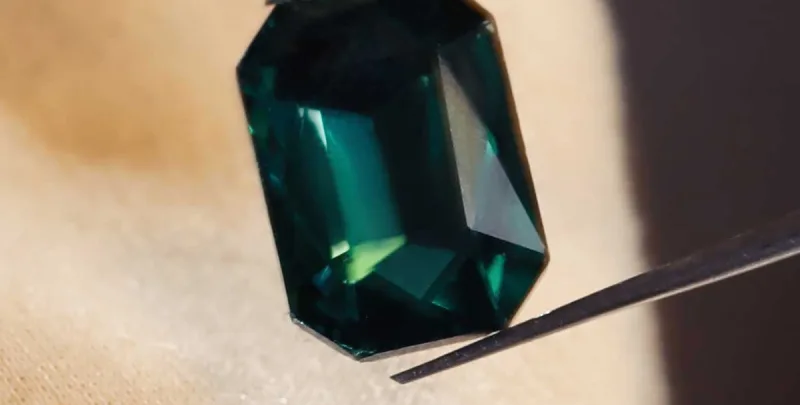The story of the Blue Hope diamond has been a source of fascination for centuries. Indeed, the intense blue stone (around the size and shape of a walnut) is today described as the most famous diamond in the world. Why? For its curse.
An eye for an eye
Legend has it that the diamond was plucked from the eye of a statue of the Hindu goddess, Sita, by the French merchant traveller Jean Baptiste Tavernier while travelling in India in the seventeenth century. A curse was placed upon the stone in revenge, bringing bad luck or death to all who touched it.
Nothing but superstition?
The curse has since been dismissed not only as superstition but as a story invented in the late nineteenth to early twentieth century to enhance the stone’s mystique (generating publicity) and newsworthiness (adding to its market value).
A number of newspaper articles have been pinpointed as helping to spread the rumour, including an entry in the New York Times (January 29, 1911) listing the names and gruesome fates of all those who had supposedly fallen victim to the curse. Among these were: Princess Marie Louise of Savoy, torn apart by a French mob; King Louis XVI and Marie Antoinette (guillotined); Simon Mencharides, the merchant who once sold the stone to the Turkish sultan, Sultan Hamid and was thrown from a precipice along with his wife and young child; the Russian Prince Ivan Kanitovski, killed by Russian revolutionists (and who shot his sweetheart, the Folies Bergère actress, Madmoiselle Ledue, whilst she was wearing the jewel on stage); and also Tavernier himself, said to have been torn to pieces by wild dogs in Constantinople.
Many of these claims have not withstood the test of time or scrutiny. Tavernier for example lived until the age of 84 and died of natural causes, and there is significant dispute over how he first came to acquire the stone (either by purchase or theft). A more recent report in The New York Times claimed: “any hard evidence linking it to tragedy has yet to be officially proven” (2006).
The facts
To stick to what we do know, the stone did indeed originate in India, from the Kollur mine in Golconda. When Tavernier first discovered it, it weighed around 112 carats and was a crude triangular shaped stone, which he described as a ‘beautiful violet’. Today the stone has been officially classified by the GIA as fancy dark greyish blue (rare), however a further test using a very sensitive colourimeter has shown that there is a very slight violent component to the deep blue colour that is imperceptible to the naked eye.
A turbulent journey
Tavernier transported the stone back to Paris where he sold it in 1668 to King Louis XVI, who had it recut by his court jeweller, Sieur Pitau, and suspended on a neck ribbon which he wore on ceremonial occasions. Today it is still sometimes referred to as Le Bijou du Roi (‘the King’s Jewel’) or Le bleu de France (‘the Blue of France’).
Since then the jewel has gone missing, resurfaced and changed hands many times. Several accounts suggest that it may even have been acquired by King George IV at one point before being sold off once again to pay his debts.
The final private owner
In 1909, the stone was bought by Pierre Cartier, who had it recut and set in a more modern style – a cushion antique brilliant diamond with a faceted girdle and extra facets on the pavilion (weighing in at 45 carats). This is how it remains today and was done to aid Cartier in the sale of the diamond to the American mining heiress and socialite, Mrs. Evalyn Walsh McLean, and her husband Edward. The plan worked and, despite a great deal of legal wrangling, the sale was eventually made in 1911 for $300,000 (though some accounts claim less was paid).
A condition of the sale stated that: “Should any fatality occur to the family of Edward B. McLean within six months, the said Hope diamond is agreed to be exchanged for jewelry of equal value,” after the young couple learnt about its past.
Following Mrs McLean’s death, the stone was purchased by Harry Winston Inc. of New York in 1949, as part of her entire jewellery collection. The stone was shown at exhibits and charitable occasions around the world until it was donated to the Smithsonian Institution in 1958.
The stone remains the Smithsonian’s premier attraction to this day, and is insured for $250 million. Thankfully, no ill fate has befallen either the institution or the jewel since it changed hands.
Nevertheless
Despite the Blue Hope diamond’s reputation, it is a stone of unique value and significance and the Smithsonian was right to have it insured. Many of our own jewels are equally irreplaceable, however. Don’t risk the heart break of loss and damage – find out more about Jewellery Insurance from Assetsure who provide insurance on a Worldwide All Risks basis


























